Introduction to Ikebana
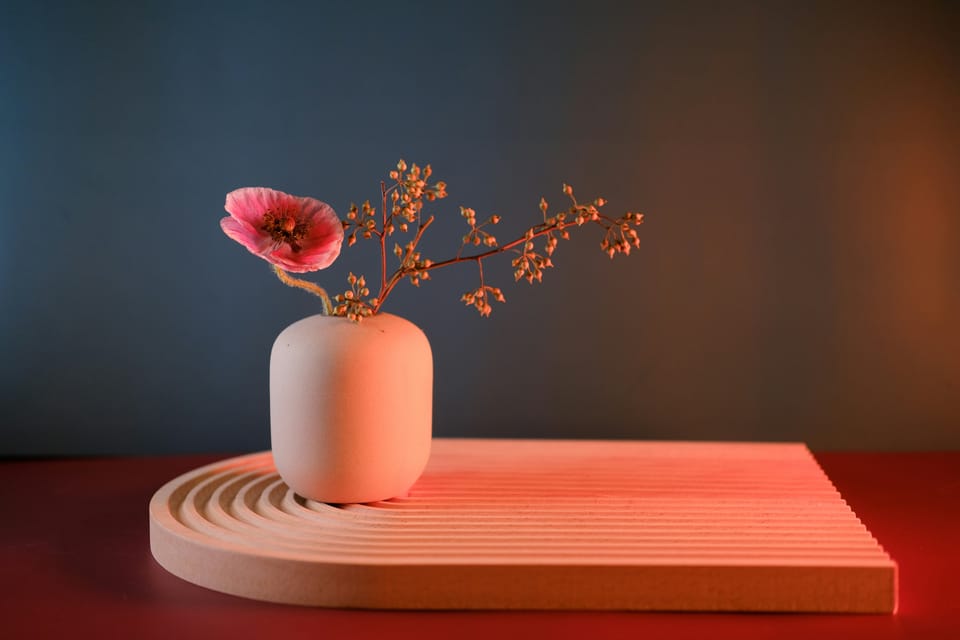
I feel I am constantly bombarded with invitations to ‘be more mindful’. Book sales on mindfulness have rocketed. Mindful colouring-in for adults is now a thing. People sell courses on becoming more mindful and how to live in the moment. I am also continually being reminded to get out into nature - it will calm my anxiety, reduce my ADHD symptoms and make me more productive. The thing is, we don’t have to spend money to be more mindful.
The Japanese have long recognised the benefits of mindfulness and nature. They invented the concept of Forest Bathing, or Shinrin Yoku as it is known in Japan. And when I lost my job during the pandemic I started forest bathing, as I have the joy and privilege of living in Ashdown Forest. I was considering different future paths after my 20 plus years in marketing - one of which was to lead people on forest bathing walks and I planned to donate a percentage of the ticket price to the Ashdown Forest Conservation Fund. However on an early test forest bathing walk some forest dwelling dogs started barking so loudly that a hole was ripped in my tranquility blanket, and I realised that my idea was a non-starter.
I’ve always been drawn to Japanese culture and their outlook on life so it is perhaps no surprise that my next mindful hobby during Covid was ikebana, aka the Japanese art of flower arranging. I love its simplicity, the artistry and its connection to nature and the changing seasons. I practiced on my own before taking a few online courses with a tutor in Japan. She taught me the principles of the Sogetsu school of ikebana and my practice evolved further.
For a while I entertained the idea of running workshops on ikebana and maybe it will be something I do in the future. I also like the idea of having a podcast for people to listen to while walking to encourage them to be more present and mindful of the nature around them and to return home with materials for ikebana. People tell me that my voice is soft and soothing! I coined the term ‘stroll and snip’ and even created a brand and instagram page, @house_of_ikebana. For now though, ikebana is still a hobby and one I love to share with people.
How to stroll and snip
- Get outside - it all starts with a gentle, mindful walk, ideally on your own. No phone, no dogs. Do take some flower scissors or secateurs and maybe a trug or basket. Walk slowly. Slow right down and look around. And I mean really look. Stop and stare at all the details of the trees, bushes, branches, moss, leaves, weeds, flowers, petals, buds, seed pods. You will be amazed at what you will spot.
- Find your materials - what are you drawn to? Giant daisies growing wild? How about some curvy willow twigs, or some curled up ferns? Sometimes a twig will be covered in moss and worth collecting. Other times I find flowers where the petals have fallen off and otherworldly seed pods are left, these are great shapes to use.
- Less is more - for ikebana you only need about two or three types of plants. Select a few of each and snip them as long as you can as you will snip again when you come to arrange them. Be wary of snipping flowers in the wild that are protected. Best to snip in your garden or those of friends (with permission of course).
- Space to create - once home, clear a worktop or table as it feels good to have an uncluttered space in which to create. Fill a large jug with water and pop in all your cuttings. Next fill a shallow bowl with water as this will be used to snip your plants to size. Choose the right vase for your arrangement and select a kenzan (flower frog) that will fit in it.
ITEMS YOU WILL NEED
A jug
A wide bowl
A low open vase or pretty bowl for your arrangement (see photo)
Flower scissors (see photo)
Kenzan or flower frog (see photo)
- Stem selection - spend some quiet time closely examining your snippings. Look at which way they each bend. Identify ones with unusual shapes you want to draw attention to or twigs with twists that draw the eye. Some flowers may be perfect, others may have too many leaves that you need to snip off. Choose three of the same flower or plant to use as the focus of your arrangement and snip these to different lengths. Make each snip while holding the stem underwater.
- Creating your ikebana - arrange them with space between them using the spikes of the kenzan to hold them in place. You should place the kenzan in the vase before starting your arrangement but don’t add water until the end. Once you’ve arranged the first three, take a different leaf or flower and add sparingly to the arrangement to add height or width, and to cover the kenzan. Keep it simple, aim for different heights and angles, and go with what looks and feels right to you. Once you are happy, fill the vase with water. Part of the reason for using a wide low vase or bowl is so the water resembles a pool.
- Ikebana styles - in traditional ikebana there are different schools of thought on how to arrange flowers. One school, Sogetsu, uses quite precise proportions and geometry for the arrangement. While this is an interesting practice to learn, and something I might cover in a workshop, I think that when starting out it is more creative and freeing to just go with what feels right in the moment.
- Placement - finally find or create a clear space in your home for your ikebana. I like a neutral background so that the arrangement stands out. There is something very calming about taking an intentional moment each day to observe your creation and all the details in the plants you have chosen. The simplicity of the arrangement means that you notice the intricate details and you will find you are more in tune with nature through the act of bringing some of it into your home.
I would love to see photos of your creations and if you put them on Instagram please tag @house_of_ikebana.
Unplugged Ambition has suggested that I also host a workshop on ikebana so do comment below if this would be of interest to you. I have thought of doing this as a side hustle and so this could be the impetus for me to create an online workshop and our community could be my beta testers!
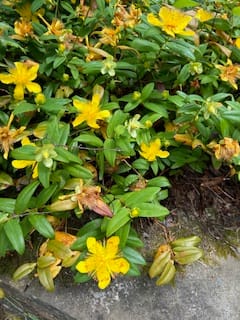


Flowers growing in the garden including Golden cup (St John’s Wort) - the yellow flower and Valerian (pink flower)

My jug of snippings (unarranged)
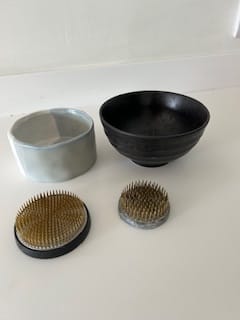
Ikebana bowls and two sizes of kenzan
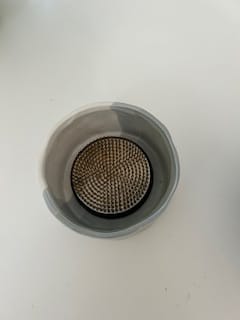
Kenzan in bowls
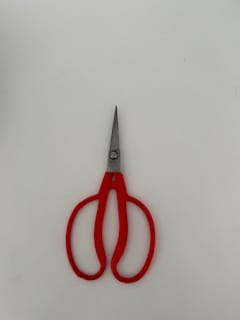
Flower scissors
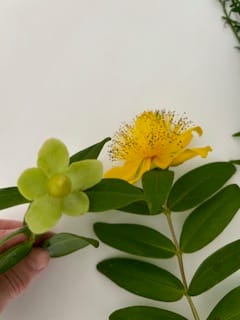
The goldencup flower without its petals.
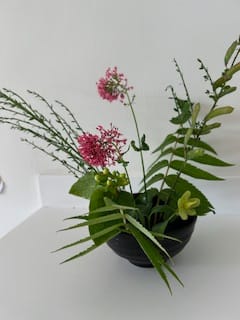
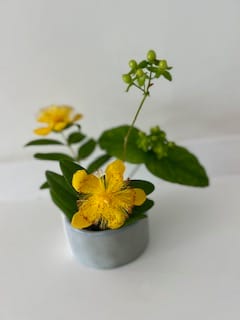
Two different arrangements from one walk created on the same day